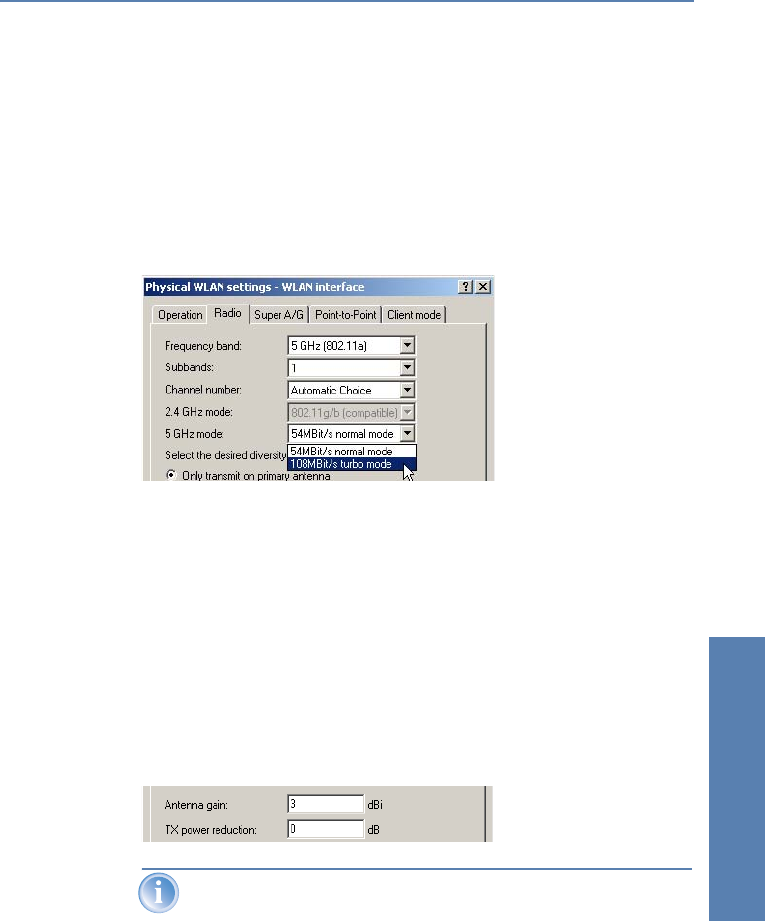
̈ Chapter 11: Wireless LAN – WLAN LANCOM Reference Manual LCOS 3.50
247
Wireless LAN – WLAN
this mode, the WLAN card in the access point principally works with the faster
standard and falls back on the slower mode should a client of this type log
into the WLAN. In the '2Mbit compatible' mode, the access point supports
older 802.11b cards with a maximum transmission speed of 2 Mbps.
Turbo mode
Using two neighbouring, vacant channels for wireless transmissions can
increase the transfer speeds up to 108 Mbps. Set this option for the 2.4-GHz
band by selecting the drop down list '2.4 GHz mode', for the 5-GHz band in
the appropriate list '5 GHz mode' below.
Antenna gain
Transmission power
reduction
Where the transmission power of an antennae exceeds the levels permitted in
the country of operation, the power must be attenuated accordingly.
̈ The field 'Antenna gain' is for the gain of the antenna minus the actual
cable loss. For an AirLancer Extender O-18a antenna with a gain of 18dBi
and a 4m cable with a loss of 1dB/m, the 'Antenna gain' would be entered
as 18 - 4 = 14. This value for true antenna gain is dynamically used to
calculate and emit the maximum permissible power with regards to other
parameters such as country, data rate and frequency band.
̈ In contrast to this, the entry in the field 'Tx power reduction' causes a
static reduction in the power by the value entered, and ignores the other
parameters. Also see ’Establishing outdoor wireless networks’
→page 256.
The transmission power reduction simply reduces the emitted power.
The reception sensitivity (reception antenna gain) remains unaffected.
This option is useful, for example, where large distances have to be
bridged by radio when using shorter cables. The reception antenna
gain can be increased without exceeding the legal limits on
transmission power. This leads to an improvement in the maximum


















